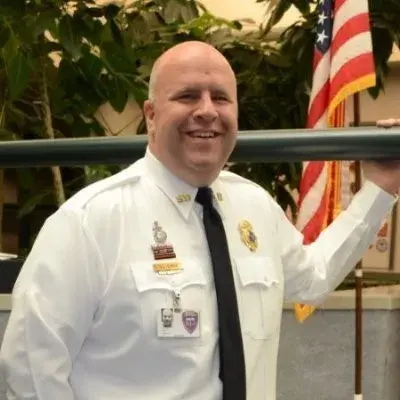The U.S. Department of Homeland Security (DHS) Science and Technology Directorate’s (S&T) First Responders Group (FRG) relies on experienced emergency response and preparedness professionals to guide its research and development efforts. The First Responder Resource Group (FRRG) fills that role. An all-volunteer working group, the FRRG helps S&T maintain focus on the top-priority needs of responders across the nation. This series highlights several FRRG members, offering a glimpse into their daily responsibilities, as well as their ongoing support of S&T technology development.
 D. Jeremy DeMar has every reason to be excited about joining the FRRG this year. He has a long history in emergency services—he has been involved in public safety in one capacity or another since the late 1980s—and brings both his professional experience and continuing pursuit of higher education to the table.
D. Jeremy DeMar has every reason to be excited about joining the FRRG this year. He has a long history in emergency services—he has been involved in public safety in one capacity or another since the late 1980s—and brings both his professional experience and continuing pursuit of higher education to the table.
As a public safety emergency communications supervisor at the Rochester, New York, Emergency Communications Department/Monroe County 911 Center, DeMar knows all too well the need for improving emergency service networks. He oversees the daily activity of a high-volume public safety answering point. On a daily basis, Demar and his colleagues answer call-related questions from dispatchers regarding 911 callers. He and his team then work with local, state and federal officials during high profile incidents to implement operational improvements.
The Monroe County 911 center was the first in New York State to accept emergency text messages from all four major wireless carriers. Adoption of text-to-911 for people who speak limited English or have hearing disabilities could be a potential tool for the wider public and first responders; however, DeMar notes it will come with some difficulties.
“The greatest challenge related to text-to-911 is the successful rollout of the program on a nationwide basis. The public expects to be able to interact with the nation’s 911 system in a variety of different ways (voice, text, still image, video), and funding for that level of versatility isn't readily available.”
“911 is a technology driven business,” he continued. “As public demand for leading edge technology grows, 911 centers will need to be able to collaborate with our nation’s citizens via a variety of advanced digital mediums.”
In addition to serving as an active responder, DeMar is currently a graduate student with the Naval Postgraduate School Center for Homeland Defense & Security in Monterey, California. He has undergraduate degrees in Fire Science and Emergency Management, and holds the professional designations of APCO Registered Public Safety Leader (RPL), NENA Emergency Number Professional (ENP) and FEMA Credentialed All Hazards Communications Unit Leader (COML).
DeMar learned about the FRRG as a grad student from an e-mail appeal to students with a public safety background. He immediate became interested and applied for membership. So far, he has been happy with his decision, having enjoyed his first 'in-person' experience at the FRRG annual conference in July, and looks forward to future work with the group and DHS S&T. One area DeMar thinks will be critical to explore further with FRRG is how to integrate Next Generation 911 (NG911) into existing systems.
While the benefits of NG911 are many, the challenges associated with implementing the program on a nationwide level are innumerable. NG911, an internet protocol (IP)-based system, allows digital information (for example through voice, photos, videos, text messages) to flow seamlessly from the public, through the 911 network, and on to emergency responders. Federal, state and local agencies are going to have to work together, and in some cases, coordinate their implementation schedules, to make the NG911 program successful.
“NG911 is coming. A caller's ability to interact with 911 during an emergency isn't going to be limited solely to a voice conversation. Callers will be able to send still images, pre-recorded video and live streaming media of an incident to a 9-1-1 dispatcher/telecommunicator.”
In his view, someone who needs to check on a friend or a loved one in another town, city or state will instantly be routed to the 9-1-1 center serving that particular community. Ideally, dispatchers would be able to view live video feeds from a law enforcement officer’s dashcam, sending immediate assistance if the officer encounters a problem.
This interconnectivity could be further played across first responder disciplines. Smart technology worn by firefighters at the scene of a structure fire will automatically send atmospheric conditions to the 9-1-1 dispatcher, along with the blood pressure, pulse and other medical related data of the individual firefighter.
DeMar knows all too well how the diverse range of communications technology will continue to change and impact 911 dispatchers and subsequently first responders. It is this reason he hopes to bring his experience with everyday practices and the challenges dispatches face to the table at FRRG. In return, he feels he’ll soon be able to bring new insights back to the dispatcher community.
“Meeting new people and networking is extremely beneficial in the public safety arena,” DeMar said. “I look forward to hearing, sharing and learning more about the best practices of neighboring public safety entities along with other FRRG members.”
Check back soon for additional FRRG member spotlights. For more information on how to become a member of the FRRG, contact first.responder@hq.dhs.gov.
